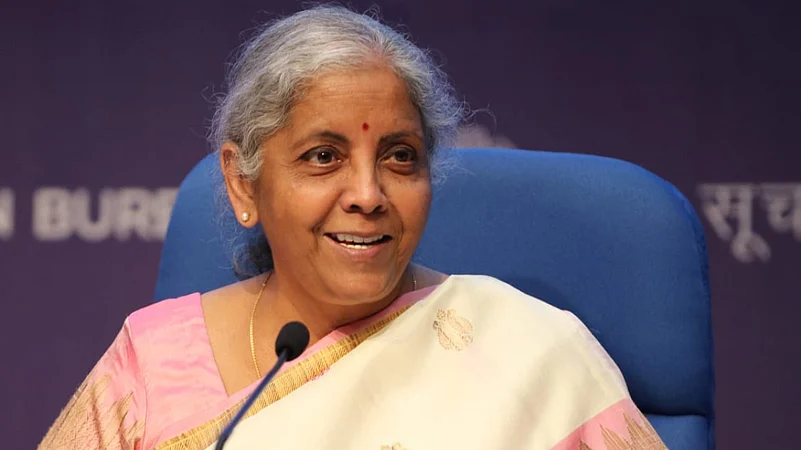Besieged with allegations of not being able to create enough jobs in the economy by the opposition, finance minister Nirmala Sitharaman had a task to present a budget in 2022 that creates jobs in the process of keeping the GDP growth rate higher than any other major economy.
Jobless growth is an accusation that most finance ministers have faced in India since the days of Manmohan Singh’s government in its first term. Sitharaman faces an unprecedented task of countering the narrative set then of not being able to control job losses in the economy.
The pandemic has been harsh on millions of Indians, who may be better off than the ones in the below-poverty-line category, but they have faced a catastrophic decline in their income during the pandemic.
Faced with this task with very few resources at disposal, Sitharaman chose the decades-old recipe to push growth in the economy through pumping in money in infrastructure projects instead of providing tax benefits to the middle class or increasing doles for the rural economy.
Rural development received just a 6 per cent hike at Rs 2,06,293 crore compared to Rs 1,94,633 crore provided in last year’s budgetary estimates. The allocations for Mahatma Gandhi Rural Employment Guarantee Scheme have been kept at Rs 73,000 crore, the level of last year’s budgetary estimates, even though the government ended up paying Rs 98,000 crore in 2021-22 due to excess demand from gram panchayats due to rising joblessness in cities.
On the other hand, the budget proposed capital expenditure of Rs 7,50,246 crore, a 35.4 per cent increase, over budgetary estimates of Rs 5,54,236 crore in the last financial year. If we include the Centre’s grants to states for asset creation, then the effective capital increase comes to Rs 10,67,889 lakh crore.
Highways Without High Growth
A large part of the government's capital expenditure goes into building roads and highways. The budget increases allocation for the National Highways Authority of India by 136 per cent from Rs 57,350 crore to Rs 1,34,015 crore. However, data suggests that this recipe has done little to improve demand in the economy for the last few years. Between April 2014 and November 2021, the total length of national highways in the country increased by 54 per cent from about 91,287 kilometres in 2014 to 1,40,937 kilometres in November 2021.
However, the next immediate economic activity that should have flourished on this data has stagnated. The total vehicle production in 2021 till December is estimated at 2,40,67,787 units, which is not even one per cent growth from the corresponding number in 2015-16 at 2,40,16,599 units. Two-wheeler sales data (a barometer for income in the lower-middle-class families in India in rural and urban areas) for April-December 2021 at just 10 million units shows that this demand is at a decadal low in the country. If the government’s expenditure on roads, highways and other infrastructure projects were leading to income growth of the masses, it would have reflected on the automobile sales in the country, especially in the two-wheeler category.
One overarching theme of the Modi government over the years has been to make India a manufacturing hub. It has been projected as the panacea to jobless growth. Sitharaman’s budget caters to that pitch. To promote domestic manufacturing of solar power modules in India, the budget provides an additional allocation of Rs 19,500 crore under production-linked incentives (PLI) for fully integrated manufacturing units from polysilicon to solar PV modules.
To promote electronic manufacturing in India, the government has calibrated import duty on wearable devices, hearable devices, electronic smart metres, parts of transformers of mobile phone chargers and camera lens among others. On the other hand, the government has decided to phase out customs duty exemption on 350 items to promote domestic capital goods, pharmaceutical and agriculture produce industry.
Missing Private Capital
Successive budgets since the financial crisis of 2008-09 have failed to fuel private investments in the country. The Reserve Bank of India (RBI) data shows that the cost of projects sanctioned by banks and financial institutions in the economy accounted for just Rs 1,75,830 crore in 2019-20 (pre-pandemic) as against Rs 1,91,512 crore reported in 2011-12. Even the inflation over the last decade has not pushed the amount of investments from the private sector in the Indian economy.
This conundrum has forced finance ministers over the years to compromise with their fiscal deficit targets suggested under the Fiscal Responsibility and Budget Management (FRBM) Act. This budget was no different. Sitharaman revealed that the government exceeded its fiscal deficit target by 10 basis points at 6.9 per cent of the GDP for FY22.
The government has set a fiscal deficit target for FY23 at 6.4 per cent of the GDP, which is 3.9 per cent above the N.K. Singh Committee’s revised FRBM target of 2.5 per cent of the GDP by 2023. Unless the private sector begins the much-awaited Capex cycle in the coming years, it would be impossible for any government to bring down fiscal deficit anywhere close to recommended targets.
India’s GDP growth over the last decade has relied on government and household consumption. But, the pandemic has taken away even the latter’s support from the government. Analysts feel that since the tax break provided to the corporate sector in 2019 has not resulted in the return of private Capex, Sitharaman could have looked at easing the burden of the salaried class along with addressing income concerns in the rural economy.
As far as creating jobs through the Atma Nirbhar Bharat mission is concerned, it would be pertinent to understand that even by the government’s admission in today’s budget, India will be able to create only six million jobs over the next five years in the manufacturing sector through its PLI schemes in 14 sectors.
India adds 10 million youngsters to its job market every year. Who will employ the remaining workforce?































